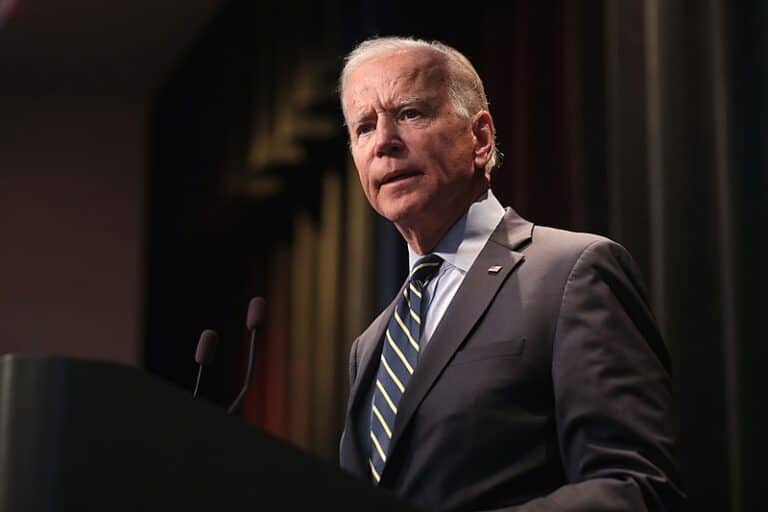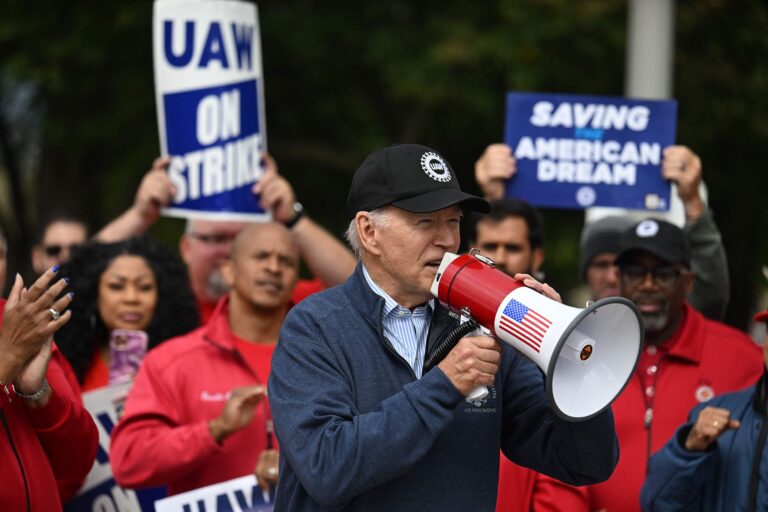
Chinmay G. Pandit is the Digital Director of OnLabor and a student at Harvard Law School.
Public pension funds and other institutional investors rejoiced earlier this week after President Biden signed a landmark executive order directing federal agencies to conduct a comprehensive review of digital currencies, with the ultimate goal of building a clear, durable, and conducive regulatory framework for the roughly $2 trillion industry.
The executive order, which represents the first time that the White House has formally weighed in on cryptocurrency, instructed the Department of Labor, Treasury Department, Securities and Exchange Commission, and other financial agencies to collectively evaluate the risks and opportunities of digital assets. The agencies have also been tasked with using their findings to propose policies that promote a more stable and secure market for consumers, investors, and businesses.
Many experts view the executive order as an “unmitigated positive signal” that cryptocurrencies are here to stay, a surprising tenor from a Biden administration that had instead been expected to crack down on the nascent cryptocurrency industry. Rather, the directive has legitimized digital assets by aiming to install proper safeguards to protect current and prospective participants in the crypto boom. As a result, the price of Bitcoin jumped nearly 9% overnight in response to President Biden’s statement.
In particular, the announcement signals a meaningful victory for institutional investors hoping to share in cryptocurrencies’ upside potential. As discussed in a recent OnLabor post, public pension funds — the traditionally circumspect stewards of public-employee retirement accounts — have just begun to venture into the cryptocurrency arena. This decision was motivated by the realization that cryptocurrency offers a potentially lucrative path for pension funds to generate more profit and meet their ballooning retiree obligations, which have nearly doubled in the past 10 years. Unfortunately, the asset’s volatility and lack of regulatory protections have rendered cryptocurrencies a decidedly risky solution, with an alarming amount of fraud and theft currently miring the underdeveloped market.
Now, however, pension funds should feel more confident in their risk-reward assessment of crypto investing. Though it is too early to speculate which individual policies will come out of the forthcoming six-month study, pension funds fall squarely within the executive order’s first focus area — “consumer and investor protection” — and should expect to have their voices heard by the Department of Labor.
For additional context, operating in the background of the executive order is the concern that international jurisdictions may adopt more favorable regulatory frameworks more quickly than the United States does, thereby attracting businesses that use digital currencies and undermining American competitiveness. Recognizing the “explosive growth” of cryptocurrency trading — illustrated by the fact that even the slow-moving pension funds are wading into the space — the Biden administration has felt pressure to mitigate the dangers of today’s Wild West governance landscape and establish a safer marketplace within which consumers and investors can confidently transact.
As one insider described, this directive is merely a “starting gun” of a race, with several more cryptocurrency-related developments and guidelines expected to follow from the Biden administration. Until then, though, public pension funds must be thankful that such a race is taking place at all.









Daily News & Commentary
Start your day with our roundup of the latest labor developments. See all
July 11
Regional director orders election without Board quorum; 9th Circuit pauses injunction on Executive Order; Driverless car legislation in Massachusetts
July 10
Wisconsin Supreme Court holds UW Health nurses are not covered by Wisconsin’s Labor Peace Act; a district judge denies the request to stay an injunction pending appeal; the NFLPA appeals an arbitration decision.
July 9
the Supreme Court allows Trump to proceed with mass firings; Secretary of Agriculture suggests Medicaid recipients replace deported migrant farmworkers; DHS ends TPS for Nicaragua and Honduras
July 8
In today’s news and commentary, Apple wins at the Fifth Circuit against the NLRB, Florida enacts a noncompete-friendly law, and complications with the No Tax on Tips in the Big Beautiful Bill. Apple won an appeal overturning a National Labor Relations Board (NLRB) decision that the company violated labor law by coercively questioning an employee […]
July 7
LA economy deals with fallout from ICE raids; a new appeal challenges the NCAA antitrust settlement; and the EPA places dissenting employees on leave.
July 6
Municipal workers in Philadelphia continue to strike; Zohran Mamdani collects union endorsements; UFCW grocery workers in California and Colorado reach tentative agreements.